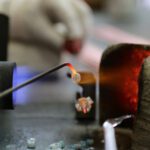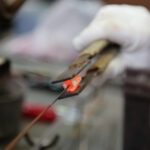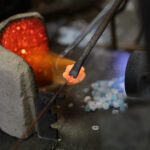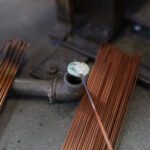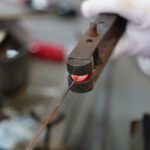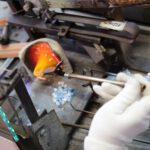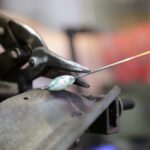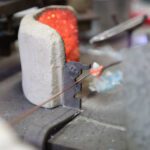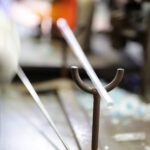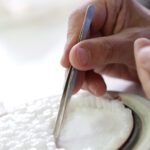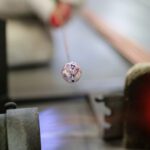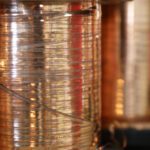Tools
The tools used for glass bead making have remained practically unchanged for centuries. Steeped in allure, and sometimes having unpronounceable names, they are an integral part of this world and in themselves represent part of the cultural and historical heritage of this craft.
Tacadìn
The word tacadìn derives from tacàr which means to attach. It is an iron rod, pointed and curved which once red hot is used to take the murrine from the plate and attach them to the molten glass of the bead being made.
Tongs
Tongs are used in the intermediate processing phases of the bead and to form cylindrical beads.
Flat-ended tongs
Tongs about twenty centimetres long with two bronze half moulds on the free ends. They are used to give the bead the desired shape.
Extension
Extension used to finish the last piece of glass cane when it is too hot to be held by hand.
Holder
Structure for holding the glass cane in the right position so that the end stays in the flame.
Copper rod
Tool invented by the Morettis to create lampwork beads in about 1935. It allows a smooth shiny hole to be made which does not cut the cotton thread once the necklace has been put together.
Coils of copper strip
Coils of copper strip: in 1968, murrine were first made using this copper strip. Invention by Ercole Moretti





